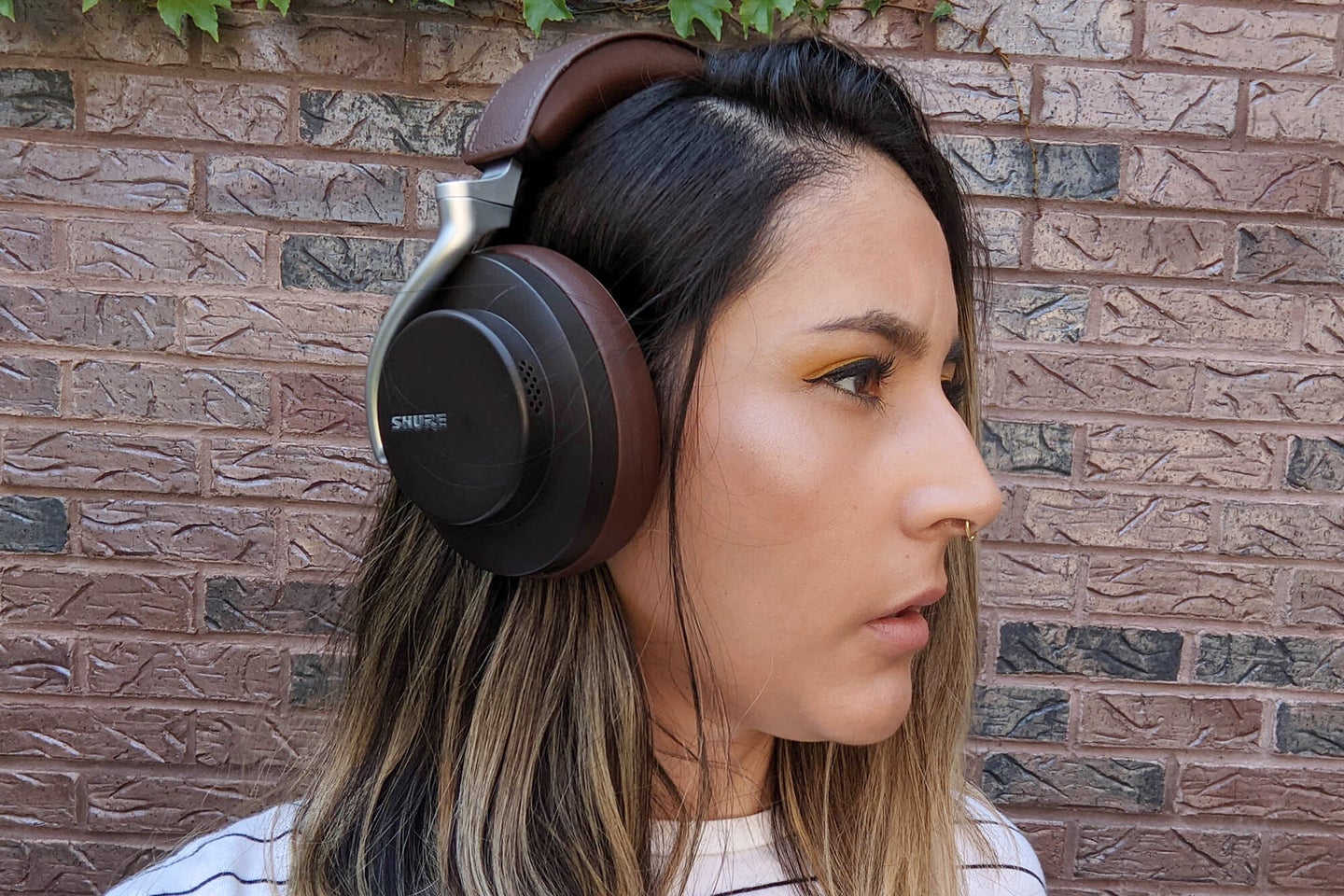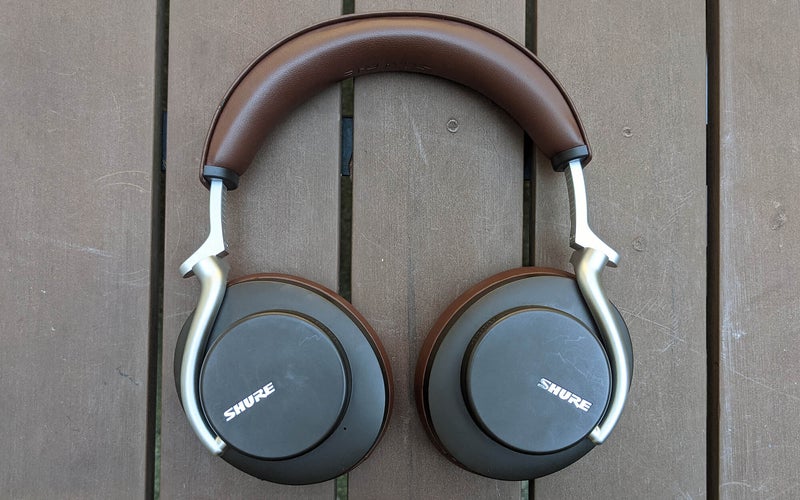Shure AONIC 50 review: Studio-quality sound, but not reference-grade noise-canceling
The Shure AONIC 50 headphones will reveal sounds you didn’t even know were in your favorite songs, while keeping (some) others out.

We may earn revenue from the products available on this page and participate in affiliate programs. Learn more ›
I’ve been an earbud kind of person most of my life but, lately, I’ve opened myself to wearing headphones. There’s that more out-of-your-head enveloping experience they provide that earbuds most of the time just can’t. When you compare earbuds vs headphones, headphones are just better for the health of your ears in the long run. Add to that excellent sonic quality and you’ve got yourself a winner. The Shure AONIC 50 headphones have some of that, making them a fine choice if you’re interested in listening to your music on-the-go and completely wirelessly, while still enjoying some of the best sound possible. Unfortunately, the Shure wireless headphones are somewhat lacking in other important departments. They include active noise-canceling (ANC) technology, and overall materials and design.
This is definitely not a reason to discard them altogether. But if the strongest noise-canceling headphones are what you’re after, it would make sense to compromise some of the $299 AONIC 50’s sound character for better ANC in a similar, equally priced, model.
Shure AONIC 50: fit
Shure claims the AONIC 50 headphones deliver comfort even after hours of listening. I found that to be true, just not right away. Out of the box, the Shure AONIC 50 felt stiff and tight. After about half an hour, I started to develop a mild headache as a result of the clamping force. After a few days, the AONIC 50 loosened up and adapted to my noggin. Now I comfortably wear them for hours at a time. Wearing them with glasses still presents a challenge.
Sandra Gutierrez
If possible, I’d definitely suggest trying them out in a store before purchasing. If you get them home and have similar issues, invest in a melon approximately the size of your head, put the AONIC 50 on them, and let them stretch out for a couple days. No, really. You’ll improve your comfort and have a snack.
Overall design
The removable, synthetic-lined earcups rely on memory foam for padding and create a solid perimeter around the ear. That creates decent sound isolation. Hinges on the metal band allow the ear cups to fold flat so they fit easily in their travel case. This design also allows them to sit comfortably on your shoulders while not in use.
They feel sturdy and durable—accidentally sitting on them when boarding a plane won’t be enough to cause a catastrophe. That ruggedness doesn’t reach every corner of the headphones, though. The textile covering the headband and the earpads is made of a thin plastic. It easily peels with wear, or even tears if your nails have a slightly sharp edge.

The Shure AONIC 50 has the classic set of buttons to control your audio without having to reach for your device. Reach to the right earcup to turn the volume up and down. Use the button in the middle to play, pause, skip, or even call the last dialed number. The bad news is that there’s some lag between the pressing of the buttons and when things actually happen. This forces you to press them slowly, or else you risk blasting your ears or calling your mom again when you only meant to skip the current song. A long-press on the play button summons a digital assistant, like Siri or Google Assistant.
Also on the right earcup, you’ll find a switch to turn noise cancellation on and off. You can go from ANC to passive isolation and a pass-through mode, which enables built-in microphones so you can interact with the world around you without removing the headset. This feature was particularly handy when picking up coffee, or when my dog stopped to sniff another dog on the street and their owner started talking to me.
Sound quality
Sound quality represents the Shure headphones’ biggest strength. Left on its default equalizer settings, the Shure AONIC 50 allows you to enjoy and distinguish all the different layers of a tune. This is more noticeable in highly produced music, like mainstream pop. The harmonies are clearer, the vocals feel crisper and with more texture. Pumping up the volume didn’t affect quality negatively, either—the bassline in more electronic songs sounds neat and never booms.
The ShurePlus PLAY app (available on iOS and Android) allows you to change your equalizer settings. It offers presets but allows you to program your own custom settings. Unfortunately, these settings only apply when you’re listening directly through the app, which was not very useful to me as I, like many people, do all my listening through streaming services like Spotify or Apple Music.
Noise cancellation
While the Shure headphones shine in sound quality, the ANC is surprisingly tame and, at times, underwhelming. Users can adjust noise-cancellation levels through the ShurePlus PLAY app. Even at its maximum level, I could still hear muffled but very present versions of an AC humming or the traffic noises of a mildly busy New York City street. While walking outside, I tried snapping my fingers to see how far they had to be in order for me not to hear them. Even with my arm fully extended, my head as far as my neck would allow, and music playing all along, I could still hear them each and every time.

Let’s be clear—the ANC in the AONIC 50 is definitely not bad. However, it’s impossible not to compare the AONIC 50 with Bose’s QuietComfort 35 II ANC headphones, which, with exactly the same price tag, offers mind-blowing noise-canceling—the kind you’d need to turn Times Square into a university library.
While most users appreciate the option of super-strong ANC, some users find it overbearing. Ultimately, it’s a matter of personal taste.
Battery life, Bluetooth connection, and other specs
Shure promises up to 20 hours of battery life and it delivers. Enabling ANC at its maximum capacity will surely drain the battery faster, but I still managed to charge them only once in over a week of constant daily use.
These Shure wireless headphones connect through Bluetooth 5.0, supporting all major codecs (standard SBC, Apple’s AAC, Sony’s higher-resolution LDAC, plus Qualcomm’s aptX, aptX HD, and aptX Low Latency audio). The Shure AONIC 50 can sync with multiple devices simultaneously. This is great if you’re constantly switching from your laptop to your phone and vice versa, but it’s not perfect. I experienced some problems when connected simultaneously to my MacBook and my Pixel phone, notably a weird glitch that paused the podcast I was listening to on my phone every time I refreshed Twitter on the browser of my computer.
Connecting the wireless headphones to my devices was easy and seamless, and the Bluetooth was always highly stable. The AONIC 50 has an official wireless range of 30 feet, but even beyond that (and through walls), I never experienced any skipping.
In addition to a Bluetooth connection, the AONIC 50 can also work as a wired headset. Within the included traveling case, you’ll find two cables. They include one USB-C for charging and another that allows you to connect the headset to 3.5mm analog audio outputs. This means you can easily connect the AONIC 50 to airplane entertainment systems and other devices with a jack. Also, the USB-C cable is not only for charging—it supports data transfer as well, which means you can connect them to your laptop or other devices for high-resolution listening (up to 32-bit/384 kHz).
Read Next: Shure AONIC 215 Gen 2 Review
So, who should buy the Shure AONIC 50 headphones?
High-quality sound, solid connectivity, long battery life, and sturdy build quality make the Shure AONIC 50 headphones worth the splurge for many listeners. If you’re looking for maximum noise cancellation to block out the world, however, you’re better off going with something from Sony (like the WH-1000XM4, a little more at $349) or Bose. If you don’t mind a little bit of real-life seeping into your listening, though, the Shure AONIC 50 may suit you just fine.

